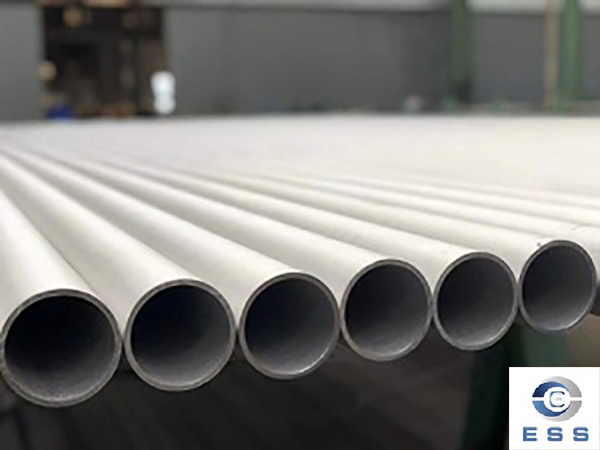Quality defect of perforated capillary and its prevention
Perforation is the first process and one of the most important deformation processes of hot-rolled
seamless steel pipe. Its function is to pierce the solid tube blank into a hollow capillary tube. There are two types of perforation and cross-rolled perforation. Regardless of the type of perforation used, quality defects may occur. One is due to the defects of the tube blank itself or the defects of the tube blank during the heating process, and the defects are further expanded after the tube blank is perforated; It is caused by the unreasonable shape of the tool and the quality defect on the surface of the perforation tool. Different punching machines and different punching methods have different reasons for the quality defects of the capillary tubes. The quality defects of perforated capillaries mainly include: uneven wall thickness of capillaries, inner straights, outer straights, surface scarring and scratches, internal folds, external folds and delaminations.

Longitudinal Rolling Piercing Process and Quality Defects and Their Prevention
Longitudinal rolling piercing includes pressure punching and push rolling piercing. The defects caused by this piercing process are related to the inherent defects of the process itself, the quality of piercing tools and improper operation, mainly including the wall thickness of punching (piercing) blanks. Average, inner straight, outer straight, surface scratches, etc. The wall thickness of punching (piercing) blanks is uneven: the main reason is that this punching (piercing) process itself easily causes the centerline of the punching (top) rod to deviate from the centerline of the tube blank, so that the punched (topped) out The inner hole of the punching (piercing) hole blank is eccentric; secondly, under the action of the huge punching force (back thrust), the punching rod (jacking rod) connecting the punching head (jacking head) will bend, and its tail end will also be bent. resulting partial wall;
Preventive measures:
A. It should be ensured that the tube blank is heated evenly to prevent serious burnout, so as to eliminate the uneven wall thickness of the punched (pierced) blank caused by the low heating quality of the tube blank;
B. Use the center of the tube blank as much as possible The line coincides with the center line of the punch (top rod);
C. Prevent the punch (top rod) from bending, and it should be replaced in time if it is found to be bent.
Punching (piercing) the inner and outer straight paths of the hole blank: It is mainly formed by scratching the inner surface of the punch (plug) in the relative movement with the inner surface of the tube blank. In order to prevent the inner and outer straight defects of the punched (pierced) hole blank, the cooling of the punch (plug) and die (roll) should be strengthened. replace.
Cross-rolling piercing process and quality defects and their prevention
The cross-rolling piercing process is the most widely used in the production of
seamless carbon steel pipes, which was invented by the German Mannesmann brothers in 1883. The skew rolling piercing machine includes two-roll type skew rolling piercing machine and three-roll type skew rolling piercing machine. The quality defects of the capillary produced by the cross-rolling and piercing of the tube blank mainly include inward folding, outward folding, uneven wall thickness and surface scratches of the capillary tube.
Inward folding of capillary tube: Capillary tube is the most likely defect in skew rolling piercing, which is closely related to the piercing performance of the tube blank, the adjustment of the piercing process parameters of the piercing pass machine and the quality of the piercing head. The factors that affect the inward folding of the capillary are: one is the amount of depression (rate) and the number of compressions before the plug; the second is the shape of the hole; the third is the surface quality of the plug.
Outward fold of capillary tube: The outward fold of capillary tube is mostly caused by the surface defects of the tube blank, which is another surface quality defect that is easily caused when the tube blank is cross-rolled and pierced. Factors affecting the outward folding of the capillary: A. The plasticity of the tube blank and the deformation of the perforation; B. The surface defect of the tube blank; C. The quality of the perforation tool and the shape of the hole;
Uneven thickness of capillary wall: there are uneven horizontal wall thickness and uneven longitudinal wall thickness. When cross-rolling and piercing, the uneven horizontal wall thickness is most likely to occur. The main factors that affect the uneven lateral wall thickness of the capillary tube are: the heating temperature of the tube blank, the centering of the tube end, the hole type adjustment of the punching machine, and the shape of the tool.
Scratches on the surface of the capillaries: Although the requirements for the surface quality of the perforated capillaries are not as strict as the requirements for the surface quality of the steel pipes by the rolling mill and the sizing machine, serious surface scratches on the capillaries will also affect the surface quality of the steel pipes. Factors affecting the scratches on the surface of the capillary: the main reasons are that the surface of the perforating tool or the roller table at the exit of the perforator is severely worn, not smooth or the roller table does not rotate. In order to prevent scratches on the surface of the capillary due to the surface defects of the perforation tools, the inspection and grinding of the perforation tools (guide cylinders and troughs) should be strengthened.
Read more : Nitriding treatment of seamless steel pipe













 Eastern Steel Manufacturing Co.,Ltd not only improve product production and sales services, but also provide additional value-added services. As long as you need, we can complete your specific needs together.
Eastern Steel Manufacturing Co.,Ltd not only improve product production and sales services, but also provide additional value-added services. As long as you need, we can complete your specific needs together.










